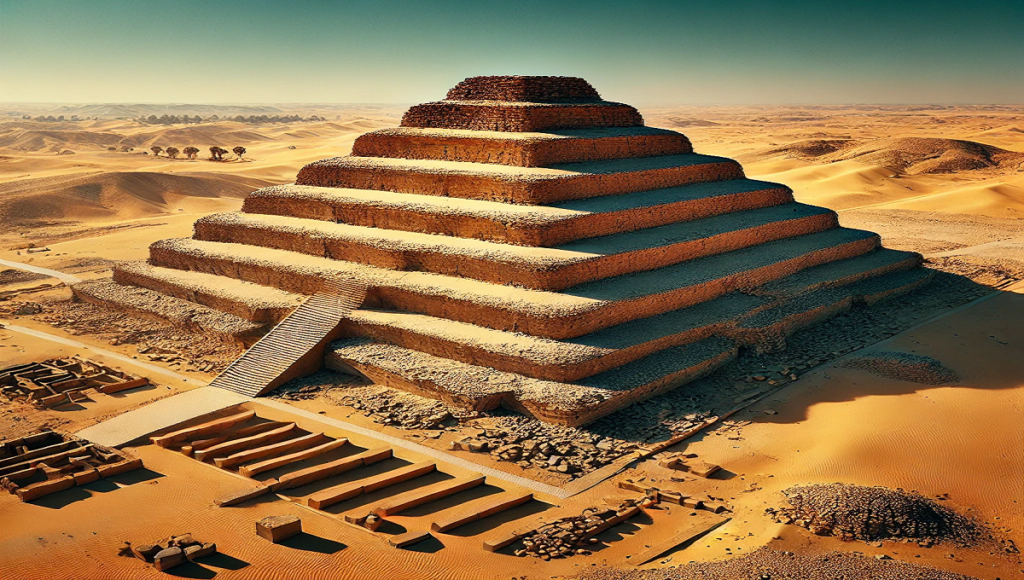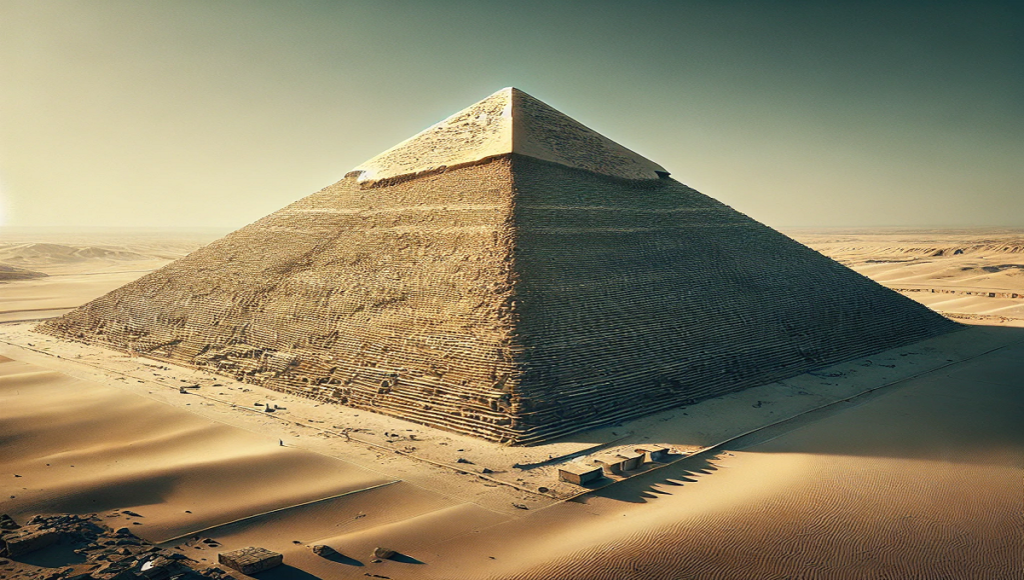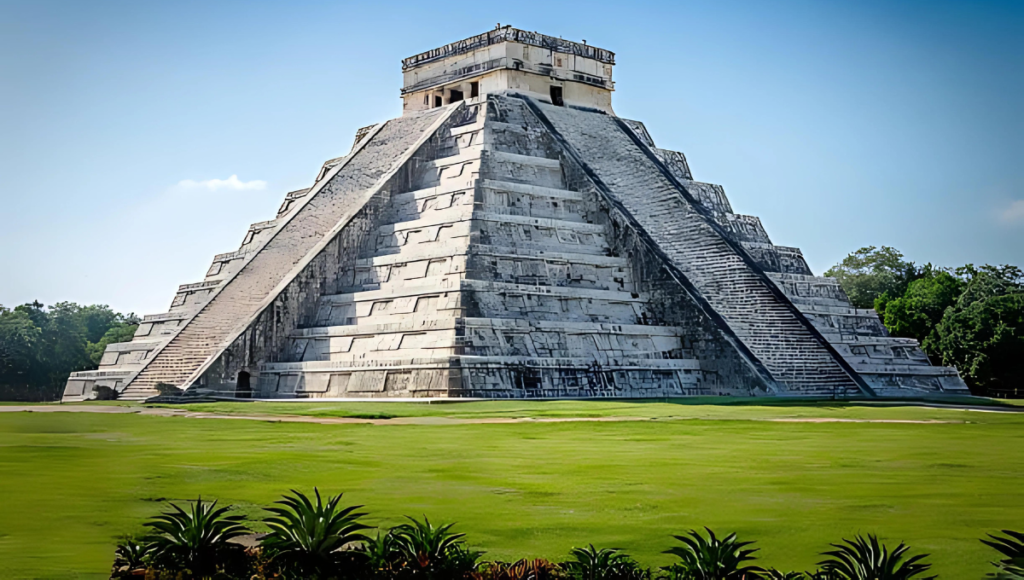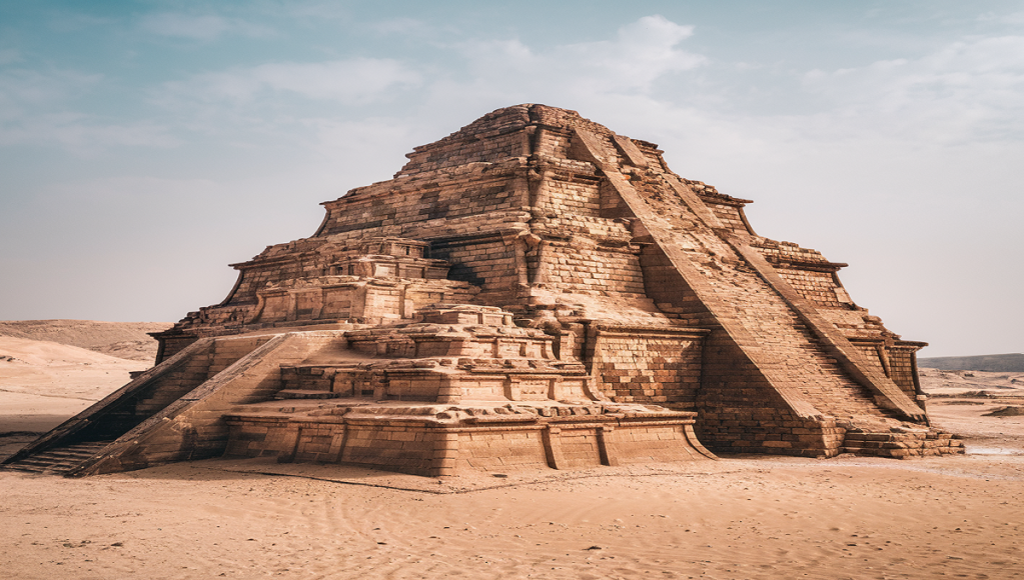Introduction: Unveiling the Mysteries
TYPES OF PYRAMIDS
Step Pyramid
Example: Pyramid of Djoser, Egypt
Description: The earliest type of pyramid, made with several
stacked platforms (or steps) decreasing in size as they go upward, forming a stair-like structure.

Bent Pyramid
Example: Bent Pyramid of Sneferu, Egypt
Description: A pyramid with a unique shape where the angle of the sides changes partway up, creating a bent appearance. It reflects an early experiment in pyramid construction.

Smooth-sided Pyramid (True Pyramid)
Example: Great Pyramid of Giza, Egypt
Description: The classic pyramid shape with smooth, sloping sides that converge at a point at the top. These are the most famous pyramids, built during the height of ancient Egyptian architecture.

Pyramid with a Flat Top (Mesoamerican)
Example: Pyramid of the Sun, Mexico
Description: Found in regions like Mesoamerica, these pyramids have a flat top and are often used as platforms for temples.They are typically steep and constructed as part of religious complexes.

Layered Pyramid (Nubian Pyramid)
Example: Nubian Pyramids, Sudan
Description: Pyramids with steep sides and smaller bases than Egyptian pyramids, usually built in layers, and constructed by the ancient Nubian civilization.

Tiered Pyramid (Cambodian Style)
Example: Bakong Pyramid, Cambodia
Description: Found in Southeast Asia, these pyramids are terraced and resemble large,tiered temples, often part of religious sites in the Khmer Empire.

These variations of pyramids reflect the different architectural styles and purposes of various ancient civilizations.










